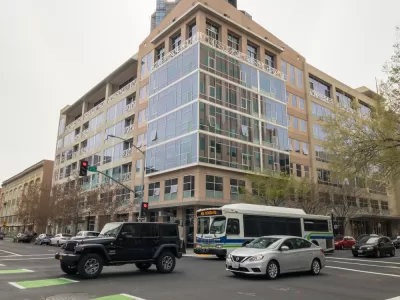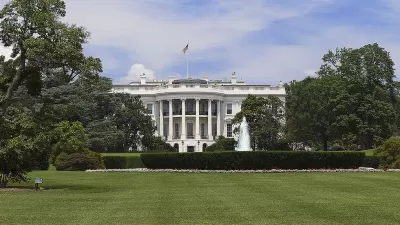One of the nation's most ambitious and sweeping statewide laws intended to spur affordable housing development was signed into law in California at the end of September.

California Governor Gavin Newsom last week signed two bills, AB 2011 and SB 6, which will allow by-right development of affordable housing developments on most commercially zoned properties in the state, allowing projects to circumvent the discretionary review processes of local governments and the review processes of the California Environmental Quality Act (CEQA).
The California State Legislature approved the dramatic statewide zoning reform in August, but the final step for approval was far from a sure thing—Gov. Newsom has a track record of vetoing bills favored by urbanists, including an Idaho Stop bill from last year’s legislative session.
“Both bills guarantee union-scale wages and promise an expedited construction process, while keeping development close to city centers to help the state meet its environmental goals and avoid sprawl,” reports Hannah Wiley for the Los Angeles Times. The support of labor unions—split after California Conference of Carpenters and the Service Employees International Union of California decided to support the bill—was essential to breaking the traditional political gridlock and winning approval for AB 2011, according to the article.
An August analysis by Joe Distefano and Peter Calthorpe for Urban Footprint found that the zoning reforms approved by the two bills could unlock enough land for development to yield 1.6 million to 2.4 million residential units.
FULL STORY: In groundbreaking plan, California allows affordable housing on some commercial properties

Planetizen Federal Action Tracker
A weekly monitor of how Trump’s orders and actions are impacting planners and planning in America.

Map: Where Senate Republicans Want to Sell Your Public Lands
For public land advocates, the Senate Republicans’ proposal to sell millions of acres of public land in the West is “the biggest fight of their careers.”

Restaurant Patios Were a Pandemic Win — Why Were They so Hard to Keep?
Social distancing requirements and changes in travel patterns prompted cities to pilot new uses for street and sidewalk space. Then it got complicated.

Platform Pilsner: Vancouver Transit Agency Releases... a Beer?
TransLink will receive a portion of every sale of the four-pack.

Toronto Weighs Cheaper Transit, Parking Hikes for Major Events
Special event rates would take effect during large festivals, sports games and concerts to ‘discourage driving, manage congestion and free up space for transit.”

Berlin to Consider Car-Free Zone Larger Than Manhattan
The area bound by the 22-mile Ringbahn would still allow 12 uses of a private automobile per year per person, and several other exemptions.
Urban Design for Planners 1: Software Tools
This six-course series explores essential urban design concepts using open source software and equips planners with the tools they need to participate fully in the urban design process.
Planning for Universal Design
Learn the tools for implementing Universal Design in planning regulations.
Heyer Gruel & Associates PA
JM Goldson LLC
Custer County Colorado
City of Camden Redevelopment Agency
City of Astoria
Transportation Research & Education Center (TREC) at Portland State University
Camden Redevelopment Agency
City of Claremont
Municipality of Princeton (NJ)





























